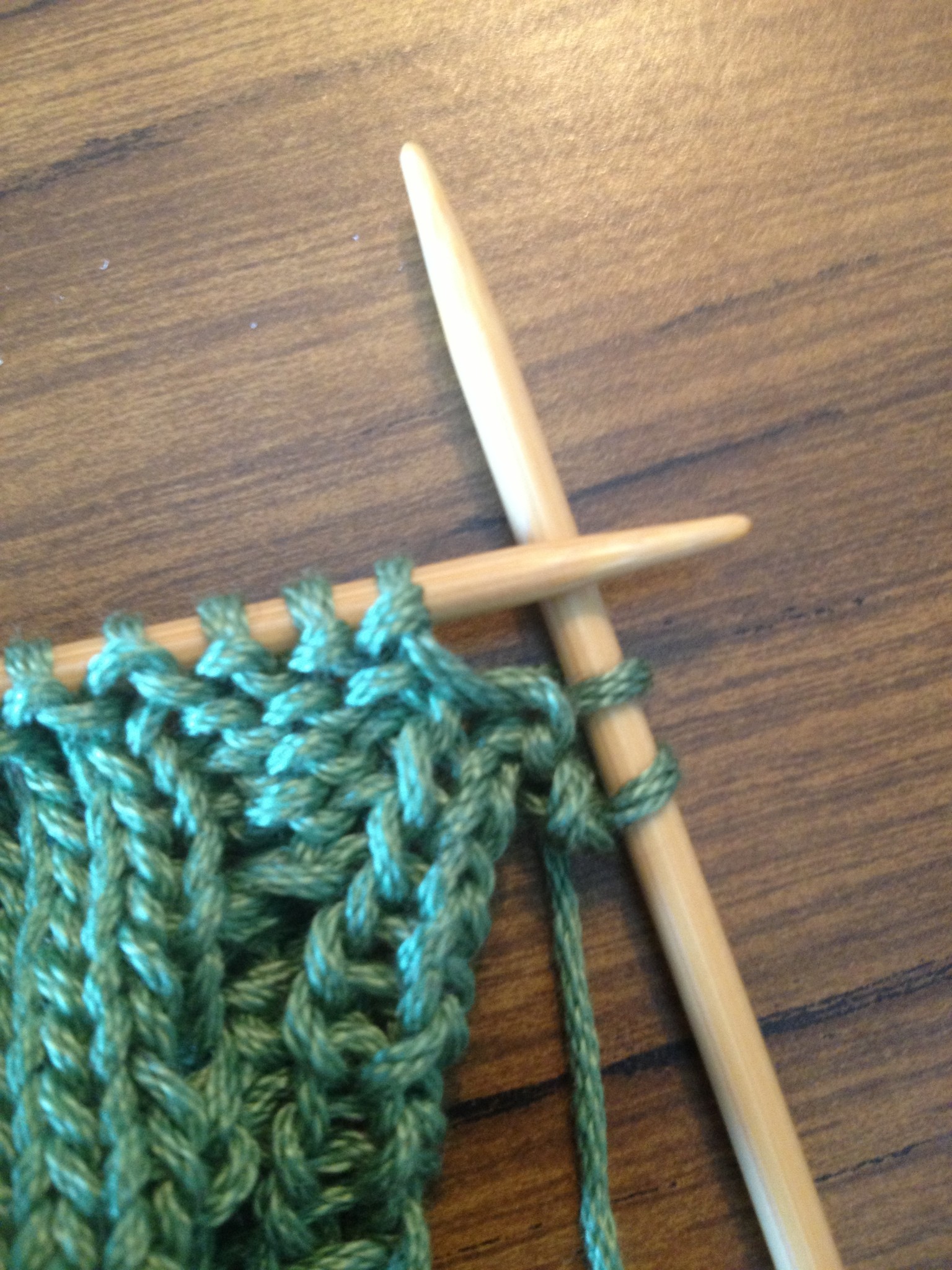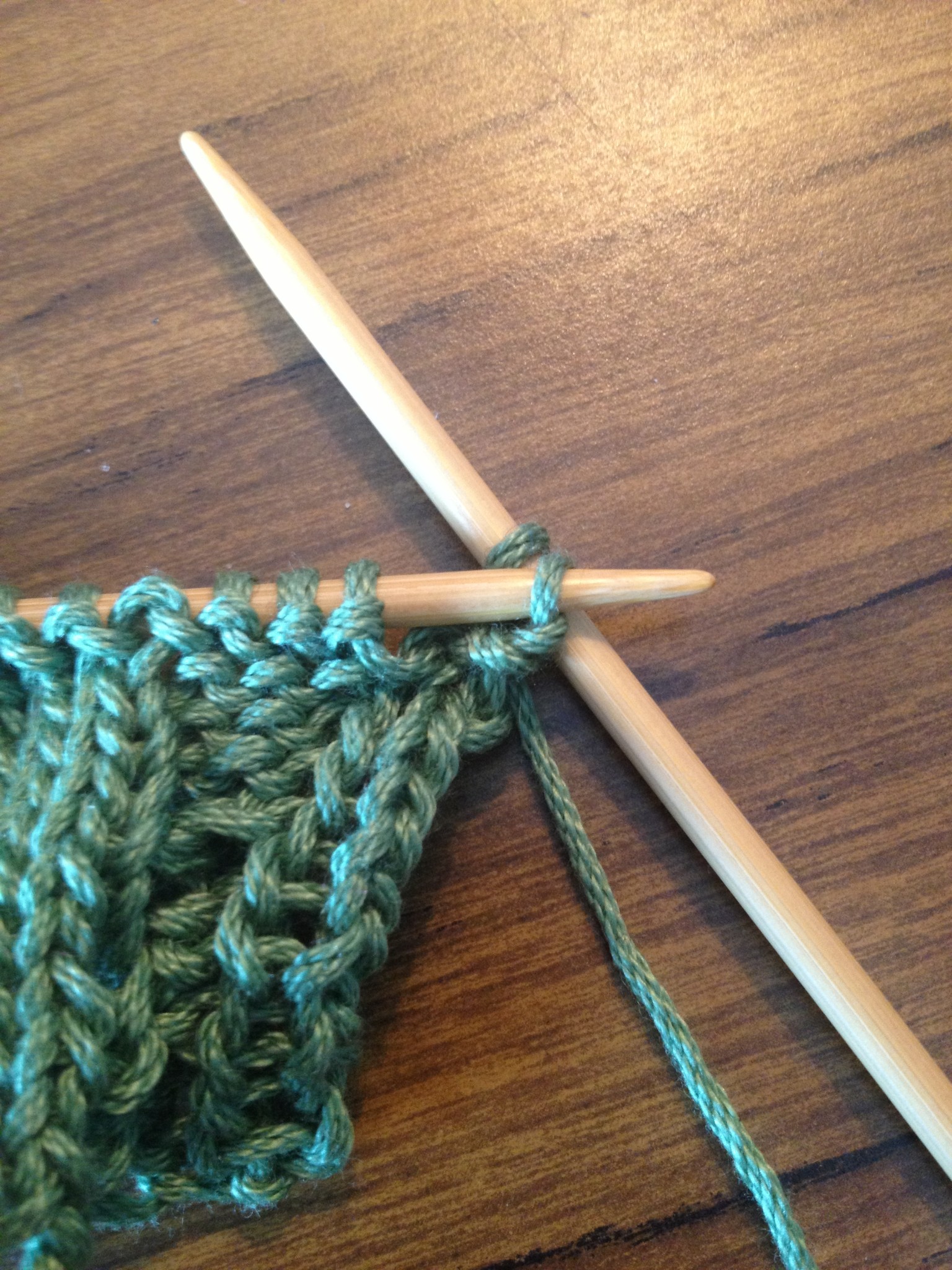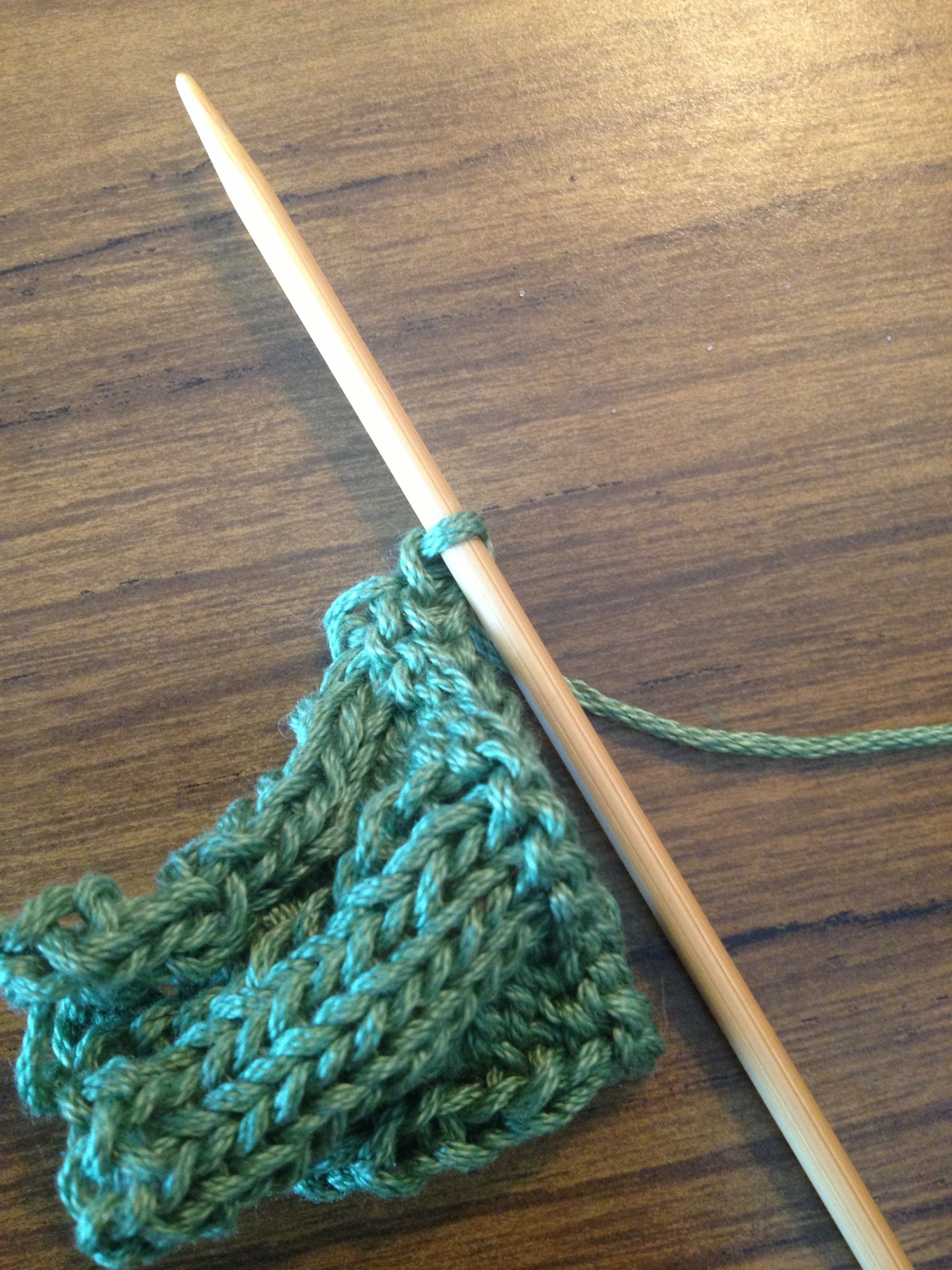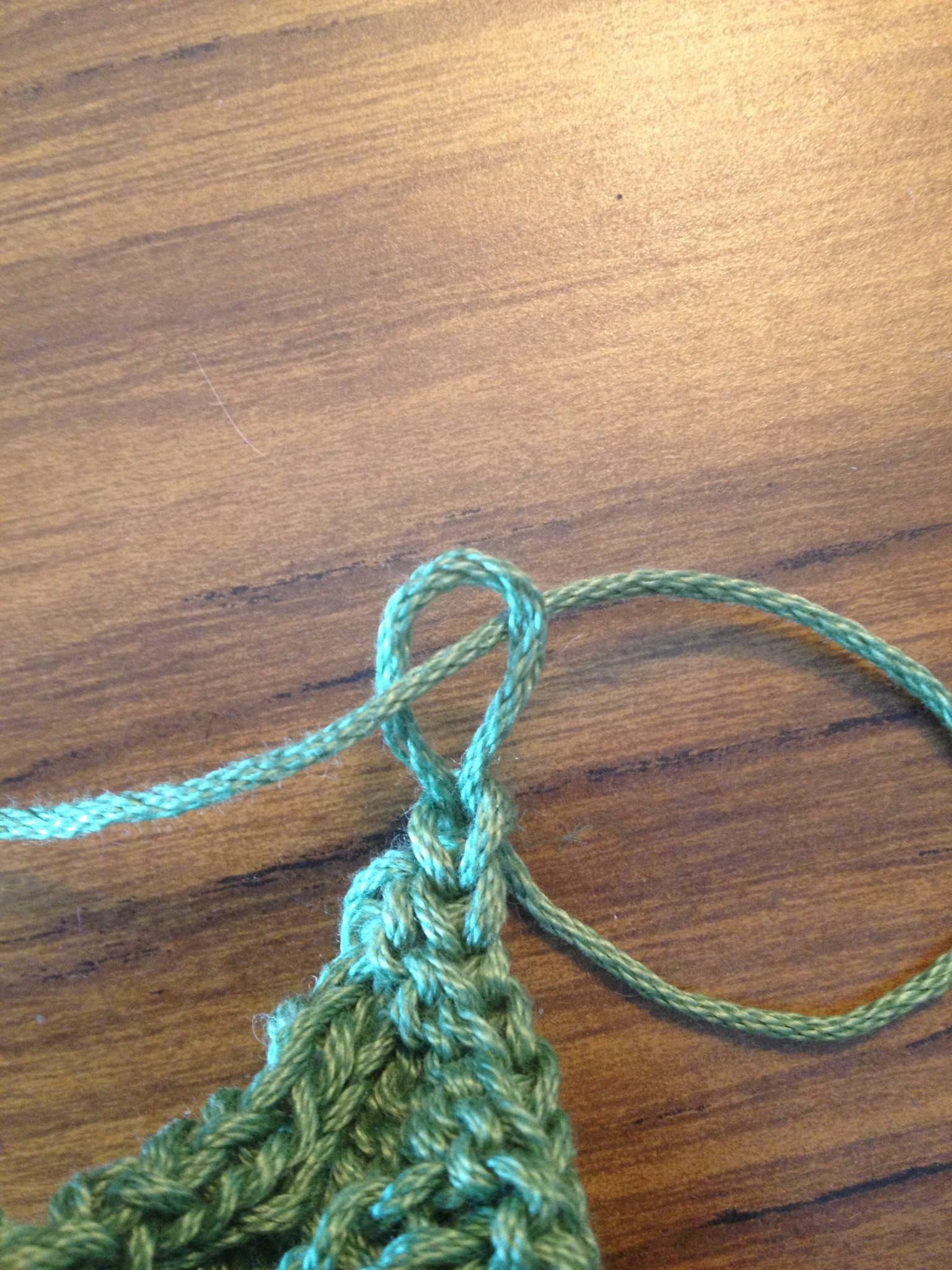Step 1:
The most basic cast off in knitting is created by alternating a knit stitch with a passed-over stitch. To start, knit the first two stitches on your cast-off row.
Step 2:
Now you’re ready to start passing stitches over. Insert the tip of the left-hand needle into the farthest stitch on the right-hand needle.
Step 3:
Now pull that stitch on the tip of the left needle over the stitch that remains on the right needle. Pull it all the way over the tip of the right needle and let it slip off both needles.
Step 4:
You have now cast off your first stitch. Then, knit the next stitch on the left needle. After that, pass the far stitch on the right needle over. Keep alternating like this until you have only one stitch remaining on the right needle.
Step 5:
Cut your yarn about 6 inches away from the last stitch. Stretch out that last stitch on the needle and remove the needle.

Share tips, start a discussion or ask one of our experts or other students a question.
No Responses to “Casting Off Your Knitting”